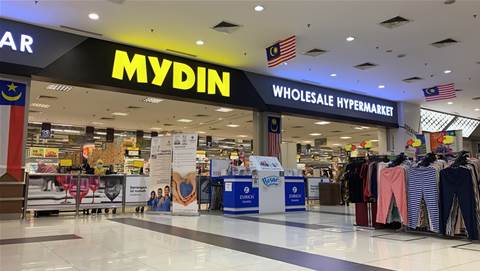Nearing the end of the first quarter, organisations are still bustling to push through with their plans to improve the digital experiences of their stakeholders.
However, IT teams are finding it difficult to cater to the many contrasting priorities – from improving connectivity, reducing latency, ensuring security, and leveraging data insights –while keeping track of these changes and the digitisation of experiences.
Moreover, while microservices, Application Programming Interfaces (APIs), and containers may accelerate individual application rollouts from a DevOps perspective, the reach and pervasiveness of modern apps has also resulted in heightened complexity that many organisations lack the skill sets to truly streamline deployments. This is especially the case when managing broader application portfolios that span multiple generations of application architectures.
These observations were made by F5 in its seventh iteration of its annual survey that represents more than 1,500 respondents worldwide, with a significant portion of respondents coming from Asia Pacific, the 2021 State of Application Strategy report.
The survey highlights the following trends – pointing to an elevated interest in cloud and as-a-service offerings, edge computing, and application security and delivery technologies that require less expertise to deploy and manage while providing compelling insights.

- Modernisation of apps and architectures
According to the survey, 87% of organisations operate both modern and traditional architectures, with modernisation deemed necessary when legacy systems are too rigid to adapt to rapidly changing business conditions.
Furthermore, more than three-quarters of respondents (77%) reported that they are presently modernising internal or customer-facing applications, with APIs as the primary method given their ability to combine capabilities of traditional and modern application components.
In addition, the percentage of organisations maintaining multiple app architectures is growing, with the survey also affirming that as-a-service and managed service offerings continue to be viewed as replacements for some applications where vendors can provide cloud-friendly alternatives.
- Accelerating growth in SaaS and cloud deployments
With the percentage of applications deployed in the cloud rising, more than two thirds (68%) are hosting at least some of their application security and delivery technologies in the cloud.
Simultaneously, organisations are positioning themselves to address the architectural complexity that results from adding SaaS and edge solutions, maintaining on-premises and multi-cloud environments, and modernising applications.
Successful integration of these elements within a cohesive application strategy will require up-levelling of how tools, skill sets, IT processes, and analytics are applied across dynamic architectures.
Regardless, security continues to be a key driver, with efforts to stay ahead of attackers frequently requiring capabilities beyond what organisations have the resources to manage on premises. Further highlighting this challenge, SaaS for security was identified as the top strategic trend among survey respondents.
- Rise of the edge as containerisation expands
Edge computing generally refers to operations performed outside of a centralised data centre. With employees and consumers logging on from increasingly distributed locations, edge computing has been identified as a significant means to reduce latency and increase the real-time responsiveness required by today’s applications.
Accordingly, the edge must evolve to better support modular application components such as containers residing across multiple cloud locations. In addition to promoting faster and more efficient deployments, placing containerised applications at the edge can improve scalability and the customer experience.
Demonstrating an appetite for these advantages, survey results note that 76% of organisations have implemented or are actively planning edge deployments, with improving application performance, collection of data, and enabling analytics as the primary drivers.

- Organisations have data but lack insights
Despite nearly three quarters of respondents (75%) consider telemetry about application security and delivery important for business outcomes, an overwhelming 95% of respondents believe they are missing insights related to performance, security, and availability – indicating a desire for a much clearer end-to-end picture than their current monitoring and analytics solutions provide.
More than half of respondents (59%) believe they already have the tools they need to report on the health of high-priority applications. What may be missing, based on survey responses, are related skillsets, as well as consensus on what the data should be used for, when, and by whom.
Individuals across organisational roles were unanimous on the topic, citing the top three insights missed as: the root cause of application issues; performance degradation causes; and potential attack details.
Moreover, nearly three-quarters of respondents intend to leverage AI to better utilise telemetry data, and more than half are looking toward AI to help their organisations transition to applications that can automatically adapt to better defend themselves and respond to changing conditions.










